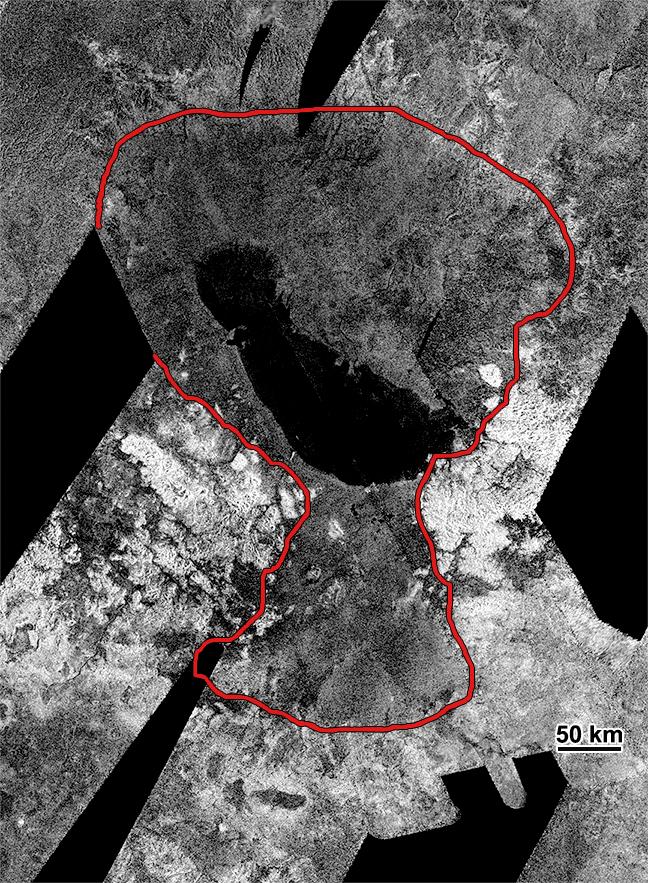Outline of an Ancient Sea on Titan — Annotated

| PIA Number | PIA16166 |
|---|---|
| Language |
|
This image from NASA's Cassini spacecraft shows an ancient southern sea that used to sprawl out near the south pole of Saturn's moon Titan. In an annotated version, the red outline traces the ancient shoreline. Within this basin is the largest present-day lake in Titan's southern hemisphere, Ontario Lacus. Ontario Lacus appears black, indicating it is filled with liquid.
This image was obtained by Cassini's radar instrument on July 2009 and January 2010. Several images have been stitched together. By analyzing these images, scientists estimate the ancient sea was possibly as large as 300 by 170 miles (475 by 280 kilometers) across and likely less than a few hundred feet (meters) deep. Ontario Lacus is about 80 by 235 kilometers across, and probably at least 30 feet (10 meters) deep at its center. Seas may have covered large parts of the southern hemisphere less than 50,000 years ago.
Titan, Saturn’s largest moon, is the only place besides Earth in our solar system that hosts large open bodies of liquid. At the cold temperatures of Titan, about minus 290 degrees Fahrenheit (94 kelvins), that liquid is not water, but methane and ethane. Over one hundred lakes and three seas are seen at the north pole of Titan, while the south pole only has a few small lakes. Scientists have suggested that cycles analogous to Croll-Milankovich cycles on Earth cause long-term cyclic transfer of liquid hydrocarbons from pole to pole, with the north pole now containing the bulk of the liquids. Less than 50,000 years ago, the cycle would have been reversed, suggesting that the south polar region should contain remnants of southern seas.
The Cassini-Huygens mission is a cooperative project of NASA, the European Space Agency and the Italian Space Agency. NASA's Jet Propulsion Laboratory, a division of the California Institute of Technology in Pasadena, manages the mission for NASA's Science Mission Directorate, Washington, DC. The Cassini orbiter was designed, developed and assembled at JPL. The radar instrument was built by JPL and the Italian Space Agency, working with team members from the United States and several European countries.
For more information about the Cassini-Huygens mission, visit http://www.nasa.gov/cassini and http://saturn.jpl.nasa.gov/ .
Credit: NASA/JPL-Caltech/ASI/Proxemy Research
